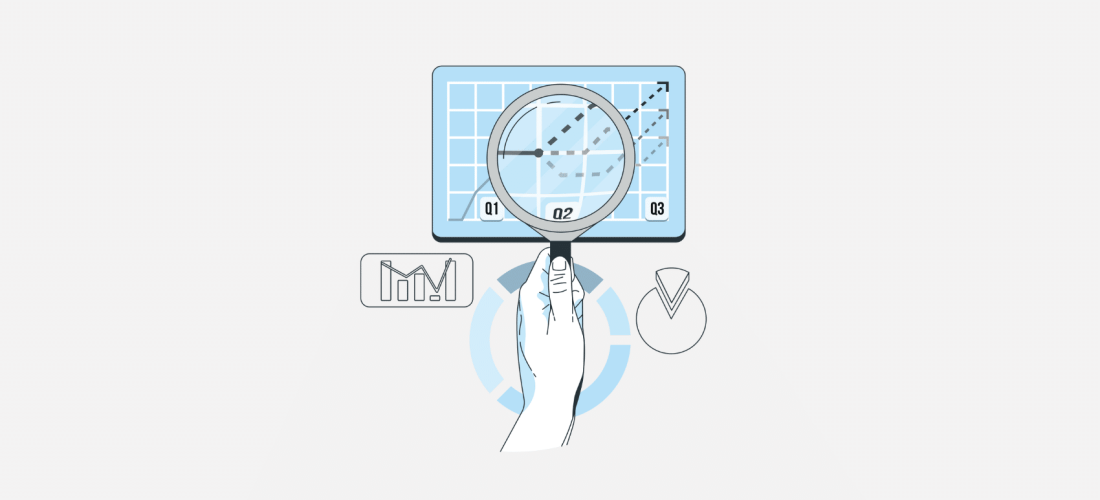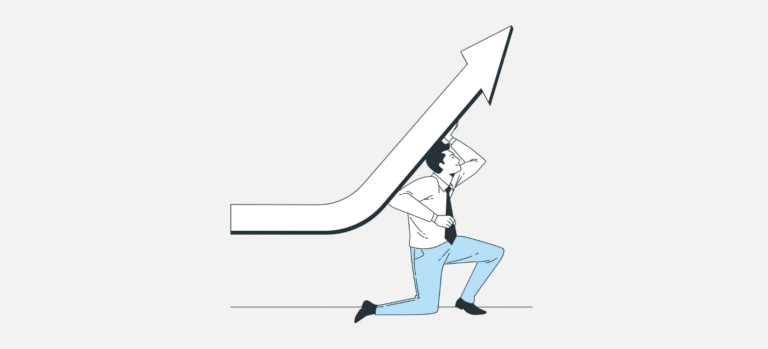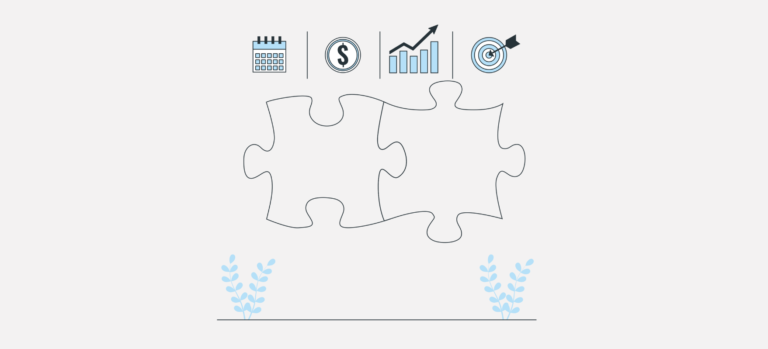In brief
- 3rd pillar solutions can be taken out in banking or insurance.
- In December 2025, the best 3rd pillar A rate is proposed by CEA at 1.25 %, followed byAllianz (1.00 %).
- 3rd pillar products are available in the form of interest-bearing account, life insurance and funds.
- The 3rd pillar in insurance includes additional warranties (savings guarantee, death, disability).
- There is no no minimum rate for 3rd pillar A accounts, each bank is free to apply the rate of its choice.
What's the best 3rd pillar?
There's no better 3rd pillar in Switzerland. As with any investment strategy, the idea of a one-size-fits-all solution is a myth. Pension needs vary considerably according to investor profile, family situation, personal objectives and investment horizon.
Here are a few concrete examples:
It would be a major mistake to recommend a 100% fund solution to someone who is retiring in 5 years' time. Similarly, advising a self-employed person or the sole breadwinner of a family not to include death or disability cover in their policy could have serious consequences. Conversely, it often makes no sense to offer a 3a life insurance policy to a young single person with no family responsibilities.
What really matters? Systematically analyze fees and benefits in detail, whether in banking or insurance. The aim of a 3rd pillar is to grow your capital, not to see it eroded by excessive fees.
Comparison of 3rd pillar A accounts
The bank-based 3rd pillar A account is a form of tied pension provision in which assets are held in a blocked savings account, subject to an interest rate set by the financial institution. This type of account doesn’t offer high returns but ensures capital security and strong stability. It’s often used to hold assets over the short or medium term, particularly in anticipation of early withdrawal (such as for purchasing a home or becoming self-employed).
Conditions vary from bank to bank, particularly in terms of interest rates, online services and administrative flexibility. The table below compares the offers available in 2025.
Update: December 08, 2025
3rd Pillar A Capital Calculator
| Service provider | Rates 10.2025 |
Final capital |
|---|
What is the best 3a account?
In October 2025, the highest interest rate on 3a accounts is offered by the Caisse d'Epargne d'Aubonne (CEA) to 1.25%, followed by Allianz at 1%.
Beyond the interest rate, it’s essential to consider other factors, such as administrative flexibility and especially early withdrawal fees, which can reach up to CHF 500 depending on the bank. These fees are often overlooked but can significantly reduce the effective return in the case of a short-term withdrawal.
Contribution limits
In 2025, it will be possible to pay out the following amounts in tied personal pension plans:
- Employees affiliated to a pension fund: Up to CHF 7,258 / year
- Self-employed or employees not affiliated to a pension fund: 20% of income, maximum CHF 36,288
Compare with a clear conscience
Many comparisons or online articles about the 3rd pillar are written by authors who are not under the supervision of FINMA. Some derive their income from affiliate programs or commercial commissions, which can influence how results are presented or which providers are highlighted.
Before relying on a recommendation, it is therefore essential to verify the source, the author’s regulatory status, and the selection method used. In a field as sensitive as retirement planning, independence and analytical rigor matter far more than slogans or promises of returns. You can verify whether an entity or individual is affiliated with a regulatory body through the Insurance Intermediaries Register or the OAR Financial Intermediaries Register.
Comparison of 3a Pension Funds
Conservative profile
A conservative profile will invest its 3a assets in 25% of shares maximum.
| Funds/Portfolio | TER % | Equity % | Type | ⌀Perf. 3 years | ⌀Perf. 5 years | ⌀Perf. 10 years |
|---|---|---|---|---|---|---|
| Descartes Index 20 | 0.40 % | 20 % | Passive | 5.7 % | 3.0 % | 2.7 % |
| Tellco Classic - Strategy 25 | 0.65 % | 20 % | Passive | 2.36 % | 1.35 % | 2.33 % |
| Zurich Invest II - Target Investment Fund 25 C | 1.3 % | 25 % | Active | 4.9 % | 1.2 % | - |
| Migros Bank (CH) Fonds 25 V | 0.93 % | 25 % | Active | 5.2 % | 1.7 % | - |
| Swiss Life Investment Foundation BVG-Mix 25 | 0.59 % | 25 % | Active | 4.4 % | 2.0 % | 2.63 % |
| UBS AST BVG-25 Aktiv Plus I-A1 | 0.65 % | 25 % | Active | 4.11 % | 1.69 % | - |
| Swisscanto BVG 3 Responsible Portfolio 15 RT | 0.57 % | 15 % | Active | 4.3 % | 0.8 % | 3.0 % |
| BEKB Strategiefonds Nachhaltig 20 | 1.18 % | 20 % | Active | 5.4 % | 0.8 % | - |
| PF Pension - ESG 25 Fund | 1.13 % | 25 % | Active | 5.6 % | 1.62 % | - |
| Pax (CH) Sustainable Portfolio 25 ALV T | 1.08 % | 25 % | Active | 5.9 % | 2.1 % | 1.69 % |
Past performance is no guarantee of future performance. Investing involves a risk of capital loss.
Balanced profile
A balanced profile will invest its 3a assets between 30% and 50% shares maximum.
| Funds/Portfolio | TER % | Equity % | Type | ⌀Perf. 3 years | ⌀Perf. 5 years | ⌀Perf. 10 years |
|---|---|---|---|---|---|---|
| Swisscanto (CH) IPF III Vorsorge Fonds 45 Passiv | 0.04 % | 45 % | Passive | 4.4 % | 5.6 % | - |
| BCGE Synchrony LPP 40 A | 0.86 % | 40 % | Active | 5.8 % | 2.1 % | - |
| BCVs / WKB (CH) flex Pension 35 AP | 1.39 % | 45 % | Active | 5.3 % | 2.0 % | - |
| Swiss Life Investment Foundation BVG-Mix 45 | 0.59 % | 45 % | Active | 6.07 % | 3.44 % | 3.96 % |
| UBS AST BVG-40 Indexiert I-A1 | 0.28 % | 40 % | Passive | 6.69 % | 2.74 % | 3.1 % |
| Baloise LPP-Mix 40 Plus | 0.81 % | 40 % | Active | 0.23 % | 3.07 % | 3.61 % |
| UBS (CH) Privilege 45 P-acc | 1.40 % | 45 % | Active | 5.4 % | 2.4 % | - |
| PF Pension - ESG 50 Fund | 1.20 % | 50 % | Active | 7.7 % | 3.5 % | - |
| PAX (CH) Sustainable Portfolio 50 ALV T | 1.11 % | 50 % | Active | 6.77 % | 3.56 % | 4.33 % |
Past performance is no guarantee of future performance. Investing involves a risk of capital loss.
Aggressive profile
A balanced profile will invest its 3a assets between 75% and 100% of shares.
| Funds/Portfolio | TER % | Equity % | Type | ⌀Perf. 3 years | ⌀Perf. 5 years | ⌀Perf. 10 years |
|---|---|---|---|---|---|---|
| Swisscanto (CH) IPF III Vorsorge Fonds 95 Passiv NT CHF | 0.02 % | 95 % | Passive | 9.76 % | 12.08 % | - |
| AXA (CH) Strategy Fund - Global Equity | 0.16 % | 95 % | Passive | 17.14 % | 10.82 % | - |
| Generali Multi Index 100 | 0.26 % | 100 % | Passive | 12.3 % | 10.2 % | - |
| HSBC Asia Pacific ex Japan Sust. Equity UCITS ETF | 0.25 % | 100 % | Passive | 22.82 % | 9.2 % | - | Invesco MSCI USA UCITS ETF Acc | 0.05 % | 100 % | Passive | 8.47 % | 12.78 % | - |
| Swiss Life Investment Foundation BVG-Mix 75 | 0.61 % | 75 % | Active | 8.47 % | 5.79 % | - |
| UBS (CH) Vitainvest - World 100 Sustainable U | 1.62 % | 100 % | Active | 11.6 % | 7.2 % | - |
| PF Pension - ESG 100 Fund | 1.27 % | 100 % | Active | 12.0 % | 8.5 % | - |
| Pax (CH) Sustainable Portfolio 100 ALV T | 1.30 % | 100 % | Active | 9.87 % | 6.09 % | 6.58 % |
| Baloise Actions Global 0-100 | 0.59 % | 100 % | Active | 1.9 % | 8.7 % | - |
| AXA (CH) Strategy Fund Economic Trends Equity CHF - S | 0.34 % | 100 % | Active | 10.46 % | 7.04 % | - |
| Zugerberg Finanz Revo4 | 1.25 % | 80 % | Active | 7.9 % | 3.6 % | 7.5 % |
| iShares S&P 500 CHF Hedged UCITS ETF (Acc) | 0.2 % | 100 % | Passive | 4.4 % | 14.4 % | 11.8 % |
Past performance is no guarantee of future performance. Investing involves a risk of capital loss.
3rd pillar comparator
Fill in our quote request form to compare 3rd pillar for customized, no-obligation analysis.
What should I bear in mind when choosing a 3a fund?
Investment horizon
Pillar 3a is a long-term investment. The more time you have before retirement, the more risk you can afford to take—especially by investing in funds with a high equity allocation.
The general rule is: the farther you are from retirement, the higher your equity allocation should be. As you approach retirement (within 5–10 years), your strategy should be adjusted, and the equity portion reduced to minimize risk. On the other hand, if you plan to withdraw funds within the next 5 years, it’s advisable to place that money in a 3a pension savings account.
Management type
Passive funds replicate an index (such as the SMI, for example) and are generally low-cost. They are well suited for a long-term strategy with reduced fees.
Active funds, on the other hand, aim to outperform the market through active stock selection. Some have succeeded in generating superior performance over 3 to 5 years, but with higher fees. Their performance therefore depends largely on the “skill” of the fund manager.
Fees
Fees directly reduce the performance of your savings. The best passive funds show TERs around 0.4%, while some active funds exceed 1%.
But TER is not the only indicator of fees. Some funds have very low TERs, but this does not always reflect the real cost to the investor. This is because the TER only includes the fund's internal costs, such as portfolio management and administration. However, someother expenses may be added outside the TER, such as platform fees, external management fees, issuing commissions or fees related to insurance products.
So, even if the TER seems low (e.g. 0.10%), total fees can exceed 1% per year once all costs are taken into account. So it's essential to look at all costs to assess the true cost of an investment.
What types of 3rd pillar plans are available?
3rd pillar A
The 3rd pillar A comes in two types: the bank-based 3a pillar and the insurance-based 3a pillar. With a bank, you can choose a 3a savings account with a fixed rate — safe but offering low returns — or 3a pension funds invested in the stock market, which have higher return potential but no capital guarantee.
On the insurance side, the 3a pillar takes the form of mixed life insurance policies, which combine savings with coverage in the event of death or loss of earning capacity. There are also fund-linked options to capture market returns, and flexible models that can be customized with various protection modules. Each insurance option under the 3rd pillar has its own advantages depending on the insured’s profile, investment horizon, and objectives.
3rd pillar B
The 3rd pillar B is part of what’s known as voluntary individual pension planning, unlike the 3rd pillar A, which is restricted by strict tax and withdrawal conditions. Pillar 3b includes all savings or insurance products that are not governed by the specific legislation of the 3rd pillar A: free life insurance policies, savings accounts, securities deposits, etc. It has no limit on the amount, is not restricted to residents of Switzerland, and can be terminated at any time.
Unlike Pillar 3A, the tax benefits of the 3rd Pillar B are very limited and depend on the canton.
Is it true that it's better to avoid the 3rd pillar in insurance?
This idea often circulates online, but it does not reflect the reality of today’s market. Some insurance companies still charge high fees or offer rigid contracts, but others have significantly modernized their products. The best among them now show an internal TER between 0.20% and 0.45%, complemented by reasonable management fees, for a total annual cost between 0.8% and 1.2% at most. These levels are comparable to — and sometimes even lower than — those of 3a banking solutions.
However, a 3a insurance plan is not suitable for everyone. It is primarily intended for people with family responsibilities, a need for financial protection, or a desire to secure their savings over the long term. Younger individuals, those without dependents, or with variable incomes will often prefer the flexibility of a banking solution.
The key is not to pit banks against insurance companies, but to choose the solution that truly matches your personal situation, your investment horizon, and your priorities.
To find out more, read our full analysis: 3rd pillar A: insurance or bank?
Frequently asked questions
Key elements to compare are: fees (TER), investment strategy (passive or active), equity component, payment flexibility, early withdrawal options, and insurance coverage and capital guarantee (if applicable).
Your choice should reflect your investment horizon, your risk tolerance and your possible need for insurance (death/disability risks).
The bank-based 3rd pillar focuses on pure savings and investment, offering great flexibility. The insurance-based 3rd pillar combines savings with risk coverage and guaranteed capital.
The choice between a 3a in a bank or insurance will therefore depend on your profile and goals.
It all depends on your objectives. For 3a accounts, the best rate is offered by Caisse d'Epargne d'Aubonne to 1.25%.
The best 3a in funds will be the one to propose:
- a strategy tailored to your goals and situation
- quality funds (diversified, transparent, high-performance),
- low annual fees (management + TER),
- reduced operating costs (transfer, EPL withdrawal, change of strategy, etc.),
- and the possibility of professional follow-up to adapt the strategy to your profile.
The short-term risk is higher, but over a longer long horizon (15 to 30 years), equity funds have historically generated superior returns. Younger investors are therefore often advised to opt for a more dynamic allocation, provided they can accept temporary fluctuations.
With a high equity allocation, you face a significant risk of capital loss in the event of a stock market crash.
Yes, it is even recommended. It allows you to stagger withdrawals at retirement (to limit the progressive impact of taxes), diversify fund managers, and tailor strategies according to your goals. The law permits multiple accounts, as long as the total contributions stay within the annual contribution limit.
Equity funds (especially index funds or ETFs) are ideal for a long-term horizon, as they offer the best return potential. For conservative profiles or those nearing retirement, mixed or bond funds are more suitable. The choice depends on the level of risk you’re willing to take and the time remaining until retirement.
Methodology
This comparison is based exclusively on public and verifiable data: management fees, interest rates, historical returns, and contractual conditions published by the institutions concerned, as well as information available on the Swiss Fund Data website. The information is updated regularly to reflect the latest available data.
Some banks and insurance companies may pay a distribution fee when subscribing via Invexa. These commissions in no way influence the selection or presentation of products: only contracts offering transparent conditions and solid performance are included in this comparison. Solutions with excessive fees or inadequate performance are not included in the comparison.
Performance figures are expressed as annualized returns (p.a.) to allow for a fair comparison between products of different durations. Annualization reflects the average yearly performance, incorporating the effect of compounding, which makes it more representative than raw cumulative returns over several years.





